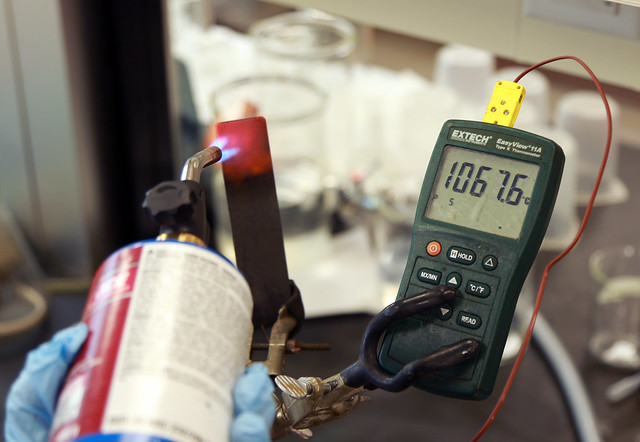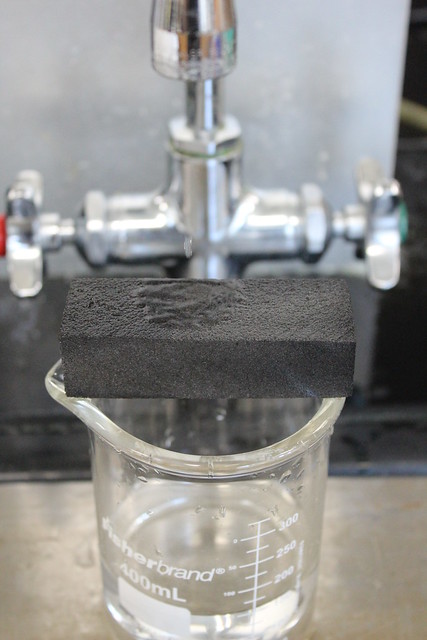
Carbon foam — a stiff, porous structure formed from a web of carbon atoms — is the stuff of manufacturers’ dreams. The breakthrough material is strong but lightweight, non-flammable and able to maintain its performance at high temperatures, and capable of absorbing sound and radiation. This unique combination of traits means carbon foam is brimming with potential applications across military, aerospace, and commercial industries. It is ideal for aircraft and ship insulation, wall panels, stealth technology (to avoid radar detection) and more.
However, developing this extraordinary technology is not without challenges. It can be difficult for manufacturers to produce a strong, lightweight, environmentally-friendly carbon foam while keeping costs low.
Scientists at the USDA Forest Service’s Forest Products Lab and Ligsteel LLC are working with Domtar, Inc to develop high-value carbon foam from lignin, the substance in a plant’s cell walls that makes it rigid. Lignin is cheap and readily available — 70 million tons are produced by the pulping and paper industries each year. By adjusting the traditional production method to incorporate this wood by-product, the team has pioneered a more cost-effective process.

Commercial carbon foams can be produced from a variety of different materials, including asphalt, foamed synthetic plastic, and coal. These starter materials help determine the properties the carbon foam will have — and the applications to which it is most suited. For example, carbon foams from pitches (viscous, elastic materials) conduct heat well and have low density, but are comparatively weak. Coal-based foams are stronger and denser but do not conduct heat as well. Lignin-based foams are strong yet lightweight, with low density and excellent thermal conductivity.
Carbon foams are typically produced by decomposing the starting material in a closed vessel at high temperature under high pressure. This step causes production costs to skyrocket, since it requires expensive high-temperature and high-pressure facilities. The joint research team has developed an alternative technique: producing carbon foams from lignin in an open vessel to lower overall production costs. Carbon foams made from 100% wood by-product developed with the new process can also easily be tailored for different uses by adjusting the starter materials and the conditions in which they are processed.
With all of its unique capabilities and unusually low production cost, lignin-based carbon foam is bound to make an international impact. The Forest Service has already filed an application for a patent on the novel carbon foam in Canada, where Domtar has a large paper mill, and in China, which is also known for its large-scale paper mill operations.

